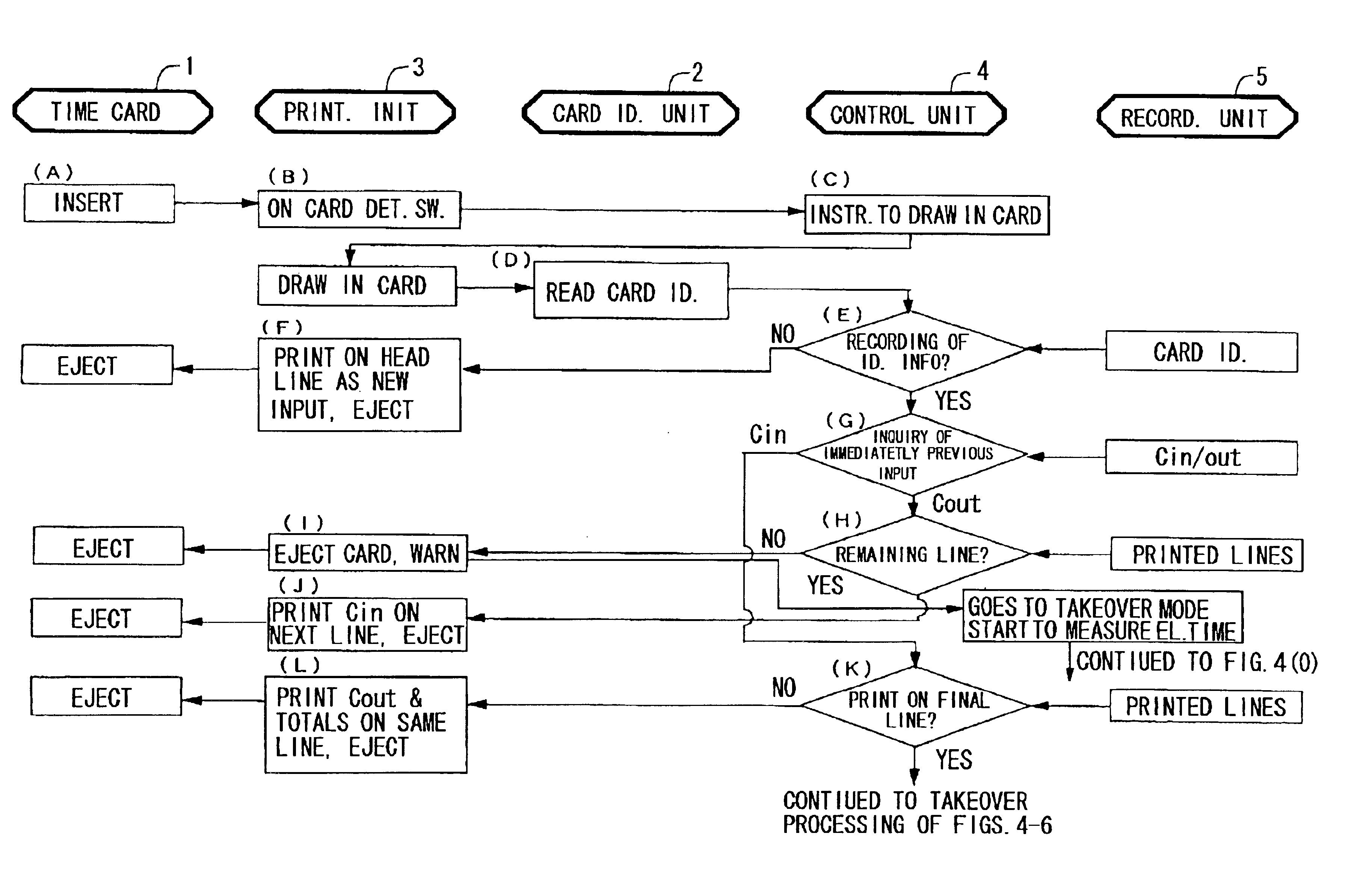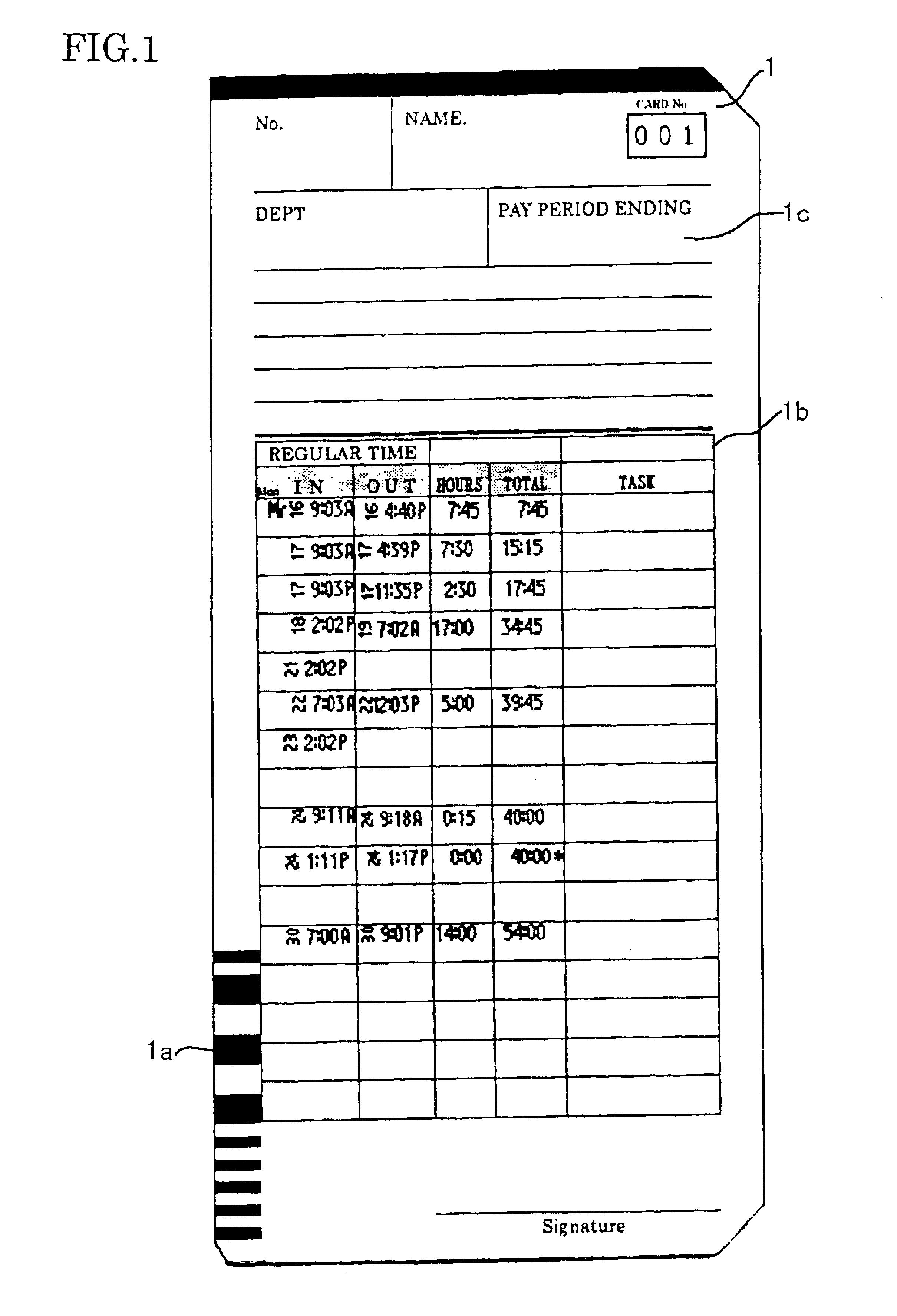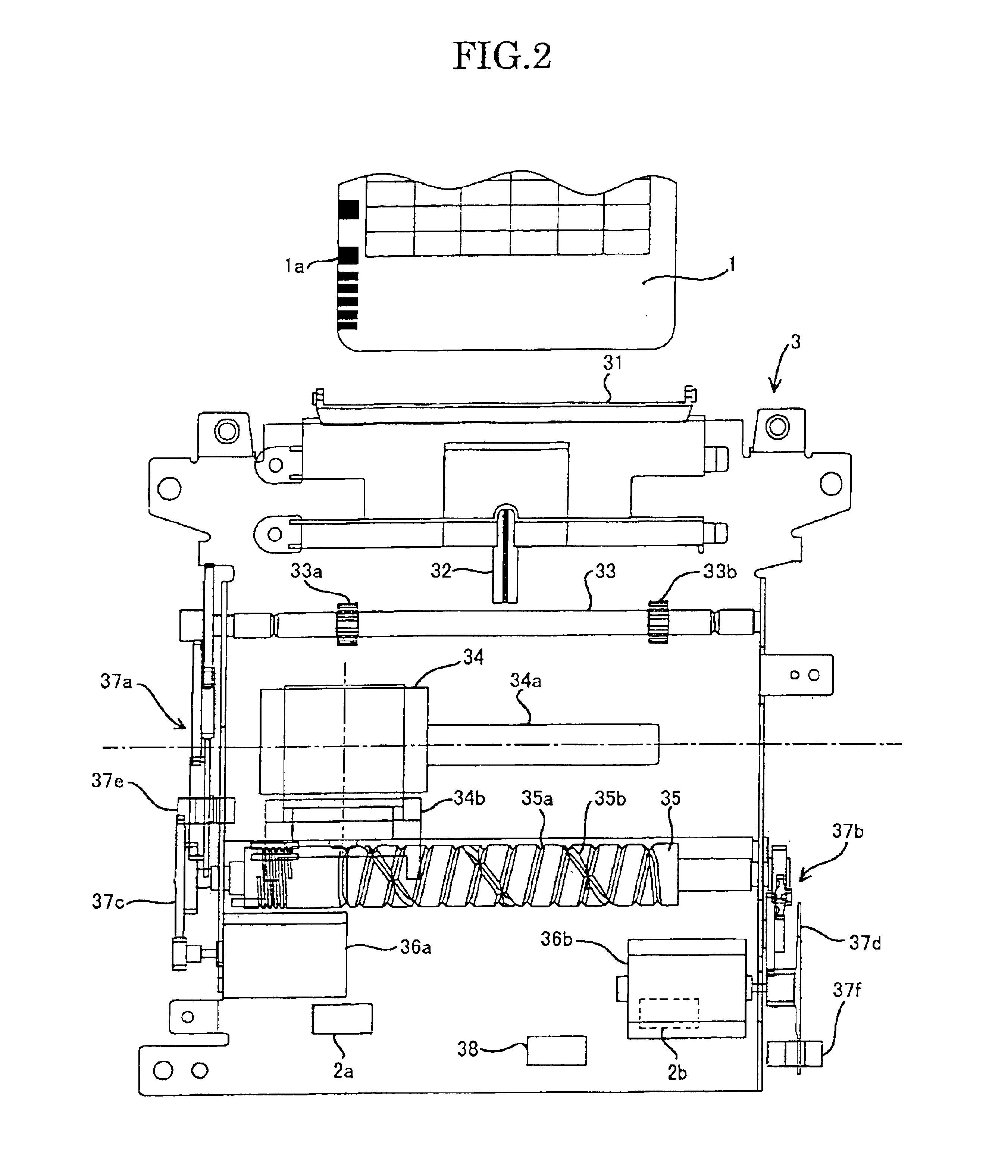Time recorder
a time recorder and time recorder technology, applied in the field of time recorders, can solve the problems of difficult printing, and limited number of clock ins/outs printable on one line, so as to reduce the cost of creating time cards, the time space is not wasted, and the width of time cards is not increased.
- Summary
- Abstract
- Description
- Claims
- Application Information
AI Technical Summary
Benefits of technology
Problems solved by technology
Method used
Image
Examples
Embodiment Construction
A time recorder according to the present invention is used for a time card 1 having card identification information 1a. The recorder has card identification units 2a, 2b for identifying the card identification information, a printing unit 3 for printing clock in / out information on the time card, a recording unit 5 for recording the card identification information and the clock in / out information, and a control unit 4.
First, the time card 1 used for the time recorder according to the invention is described by referring to FIG. 1. The time card 1 consists of a vertically long cardboard. A barcode 1a that is card identification information is attached to a lower, left side portion of each such time card. Handwritten or typed columns 1c including name (NAME), belonging department (DEPT), and final day of the pay period (PAY PERIOD ENDING) are formed at higher positions. Columns 1b where clock in / out information such as clock in / out times is printed are put in the center.
In particular, f...
PUM
 Login to View More
Login to View More Abstract
Description
Claims
Application Information
 Login to View More
Login to View More - R&D
- Intellectual Property
- Life Sciences
- Materials
- Tech Scout
- Unparalleled Data Quality
- Higher Quality Content
- 60% Fewer Hallucinations
Browse by: Latest US Patents, China's latest patents, Technical Efficacy Thesaurus, Application Domain, Technology Topic, Popular Technical Reports.
© 2025 PatSnap. All rights reserved.Legal|Privacy policy|Modern Slavery Act Transparency Statement|Sitemap|About US| Contact US: help@patsnap.com



